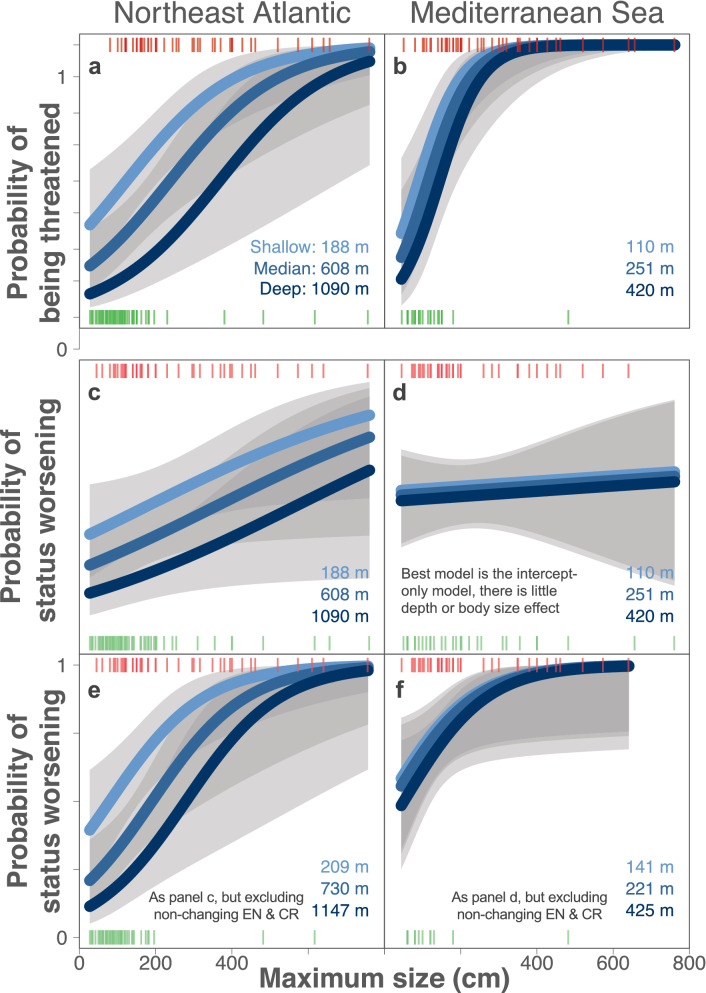Figure 4.
Effect of maximum body size and median depth on Northeast Atlantic Ocean and Mediterranean Sea shark and ray status. The probability that a shark or ray species will be threatened (1: Vulnerable, Endangered, Critically Endangered) or non-threatened (0: Least Concern, Near Threatened) due to the combination of intrinsic biological sensitivity (maximum size, cm total length of sharks, skates, and ghost sharks, or wing span of rays) and exposure to fisheries (median depth, m) in the Northeast Atlantic (a) and Mediterranean Sea (b). The probability that a shark or ray’s IUCN status will worsen (1) or stay the same (0) according to the same traits (Northeast Atlantic: c, Mediterranean Sea: d) and the same test after removing species that remained in the Endangered and Critically Endangered categories from 1980–2015 (Northeast Atlantic: e, Mediterranean Sea: f). Models are based on 118 Northeast Atlantic and 71 Mediterranean shark and ray species, excluding the outlier Basking Shark (panels a–d), and 100 and 53 species, respectively (panels e + f). Lines are the best fits from Generalised Linear Models with IUCN status (a,b) and status change (c–f) as the response and maximum size and median depth as the fixed effects (see Supplementary Tables S1, S4, S5). Lines were calculated for the lower (shallow, lightest blue), median, and upper (deep, darkest blue) depth quartiles of each species set. Vertical pink bars represent species with threatened (1; a,b) or worsening (1; c–f) status and green bars non-threatened (0; a,b) or non-changing (0; c–f) status positioned according to their maximum size.

